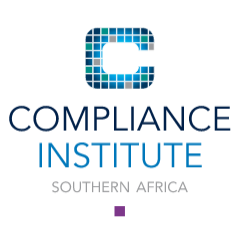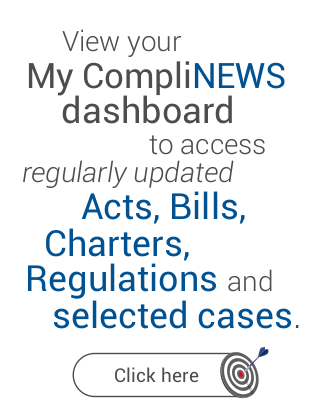Level 4 lockdown and returning to work
Publish date: 07 May 2020
Issue Number: 120
Diary: CompliNEWS
Category: Covid-19
Compli-Serve SA
With several permitted workers returning to work this week under level 4 of lockdown, the Labour Department has drafted minimum guidelines for employers to ensure the workplace is safe for returning employees. For example, all returning employees must wear masks at work. Employers must also require members of the public entering a workplace to wear masks.
Compli-Serve is currently engaging with the Financial Sector Conduct Authority (FSCA) and the Regulator has advised that they will release a directive on the status of FSP’s under L4 in due course. This will no doubt provide additional certainty for market participants.
In relation to enforcement, labour inspectors are empowered to promote, monitor and enforce compliance with the directives. Failure to comply with the directives may result in the closure of contravening businesses.
The Golden Rule remains, namely that if employees can continue to work from home, they should continue to do so.
Disaster Management Act: COVID-19 occupational health and safety measures in workplaces
Disaster Management Act: Regulations: Alert level 4 during Coronavirus COVID-19 lockdown
DEFINITION OF A FINANCIAL SERVICE
1. Employees should work from home where possible.
2 Essential financial services may operate, subject to directions issues by the relevant Cabinet member, including the following services necessary to maintain the functioning of a financial system as defined in section 1(1) of the Financial Sector Regulation Act, only when the operation of a place of business or entity is necessary to continue to perform those services:
i. the banking environment (including the operations of mutual banks, cooperative banks, co- operative financial institutions and the Postbank);
ii. the payments environment.
iii. the financial markets (including market infrastructures licensed under the Financial Markets Act, 2012 (Act No. 19 of 2012);
iv. the insurance environment.
v. the savings and investment environment.
vi. pension fund administration; vii. outsourced administration.
vii. medical schemes administration.
Call centres, for local and all international markets, may operate subject to directions issues by the relevant cabinet members. Please note further that The Call Centre Directions were not intended to apply to call centres that only provide financial services in South Africa, this is further clarified as follows: where financial institutions operate both local call centres as well as call centres that provide services to international markets, such financial institutions are expected to comply with the Call Centre Directions as well as the Joint Directive and are expected to comply with the most onerous requirement contained in either the Call Centre Directions and the Joint Directive.
Other professional services (for example the compliance sector) may operate only where work -from -home is not possible, and only to support other Alert Level 4 services.
Here are the MAJOR FACTORS that employers should take note of in preparing for level 4 at all types of permitted businesses:
1. Movement of persons
- Both essential service employees and permitted service employees may travel between their place of residence and work.
- Essential service and permitted service employers must issue their employees with a permit corresponding with a Form 2, Annexure A of the Regulations.
2. Workplace plan
Before resuming business operations, all permitted industries, businesses and entities must establish and implement a workplace plan.
At a minimum for medium and larger firms, the workplace plan must be detailed and specify the following for smaller businesses, the plan can be basic reflecting the size of the business):
- The date on which the business will re-open and the business’s operating hours.
- Lists of employees falling under the following categories:
- Those who can work from home.
- Those who are 60 years and older who will be required to stay at home or work from home.
- Those with comorbidities who will be required to stay at home or work from home.
- A timetable setting out the phased return to work.
- Details of the steps taken by the employer to get the workplace COVID-19 ready and the arrangements for employees, including:
- the social distancing measures that will be implemented;
- details of the sanitary facilities to be provided at the entrances to, and exits from, the workplace;
- details of the screening facilities and systems to be implemented at the workplace;
- details of the protocols to be followed in the case of a suspected case of COVID-19 at the workplace;
- details of the system and infrastructure to be used to record attendance at the workplace;
- identification of the designated work-areas of employees and details of the social distancing and sanitary measures to be implemented in those areas;
- identification of any designated area where members of the public are served and details of the social distancing and sanitary measures to be implemented in such area;
- identification of canteen and bathroom facilities and details of the social distancing and sanitary measures to be implemented in those areas;
- For employers with more than 500 employees, details of the establishment and implementation of COVID-19 testing facilities:
- details of employee rotational arrangements, for establishments where fewer than 100% of employees will be permitted to work at any given time; and
- details of the COVID-19 compliance officer appointed by the employer.
- The workplace plan must provide -
- details of the plan for the gradual return to work of employees;
- details of the health and social distancing measures that will be implemented at work-stations, canteens and bathroom facilities; and
- the appointment of a COVID-19 compliance officer to oversee the implementation of the workplace plan.
- Employers with over 500 employees must include details of the establishment and implementation of testing facilities in their workplace plan.
3. Employees in the workplace
- More employees will be allowed to return to work so employers are now required to adopt minimum measures to reduce the risk of infection at the workplace and minimise the spread of the virus.
- Measures must include enabling employees who are able to do so to work from home and minimising face-to-face meetings.
- ‘Special measures’ must be put in place for identified employees with comorbidities (that is, existing medical conditions) and employees above the age of 60.
- Employers whose employees encounter members of the public in the course of their duties are required to provide these employees with cloth masks which must be worn.
4. The business premises
- Employers must measure the area of their premises in square meters and determine the maximum allowable number of persons on the premises at any given time, in compliance with the social distancing requirements.
- Employers must appoint an employee as a COVID-19 compliance officer who will be responsible for ensuring:
- compliance with the workplace plan;
- that the maximum number of employees and customers is not exceeded;
- that social distancing of 1.5 metres between each person is observed both inside and outside of the workplace;
- that hand sanitizer is provided at the entrance and exit to the workplace for use by both employees and customers.
- Employers must use the COVID-19 Directive on Health and Safety in the Workplace, published by the Minister of Employment and Labour on 29 April 2020, as a guide on what measures to implement at the workplace.
5. Risk assessments in terms of Occupational Health and Safety Act (OHSA)
1. Medium and large businesses have obligations under OHSA to conduct a formal COVID risk assessment; employers with less than 10 employees need only apply the measures.
2. Full requirements for medium and large businesses laid out in COVID-19 OCCUPATIONAL HEALTH AND SAFETY MEASURES IN WORKPLACES COVID-19 (C19 OHS), 2020.
Further guidance
Employers with less than 10 employees must take the following measures:
- Arrange the workplace to ensure that employees are at least one and half metres apart or, if not practicable, place physical barriers between them to prevent the possible transmission of the virus.
- Ensure that employees that present with the symptoms set out in clause 21 are not permitted to work. Where necessary you must immediately contact the COVID-19 hotline: 0800 02 9999 for instruction and direct the employee to act in accordance with those instructions.
Clause 21: Symptom screening
Every employer must take measures to -
- screen any worker, at the time that they report for work, to ascertain whether they have any of the observable symptoms associated with COVID-19, namely fever, cough, sore throat, redness of eyes or shortness of breath (or difficulty in breathing);
- require every worker to report whether they suffer from any of the following additional symptoms: body aches, loss of smell or loss of taste, nausea, vomiting, diarrhoea, fatigue, weakness or tiredness; and require workers to immediately inform the employer if they experience any of the symptoms while at work.'
3. Provide cloth masks or require an employee to wear some form of cloth covering over their mouth and nose while at work; every employer must provide each of its employees, free of charge, with a minimum of two cloth masks, which comply with the requirement set out in the Guidelines issued by the Department of Trade, Industry and Competition, for the employee to wear while at work and while commuting to and from work; and require any other worker to wear masks in the workplace.
4. Provide each employee with hand sanitizers, soap and clean water to wash their hands and disinfectants to sanitize their workstations.
5. Ensure that each employee while at work washes with soap and sanitizes their hands; and
6. Ensure that all workstations are disinfected regularly.
7. Take any other measures indicated by a risk assessment. Every employer must undertake a risk assessment to give effect to the minimum measures required by this Directive considering the specific circumstances of the workplace.
Comply with the occupational health and safety requirements
Every employer must arrange the workplace to ensure minimal contact between workers and as far as practicable ensure that there is a minimum of one and a half metres between workers while they are working, for example, at their workstations. Depending on the circumstances of the workplace or the nature of the sector, the minimum distance may need to be longer.
Every employer must, free of charge, ensure that – there are sufficient quantities of hand sanitizer based on the number of workers or other persons who access the workplace at the entrance of, and in, the workplace which the workers or other persons are required to use; every employee who works away from the workplace, other than at home, must be provided with an adequate supply of hand sanitizer.
Every employer must take measures to ensure that all work surfaces and equipment are disinfected before work begins, regularly during the working period and after work ends; all areas such as toilets, common areas, door handles, shared electronic equipment are regularly cleaned and disinfected; disable biometric systems or make them COVID-19-proof.
The employer must ensure that there are adequate facilities for the washing of hands with soap and clean water; only paper towels are provided to dry hands after washing – the use of fabric towelling is prohibited; the workers are required to wash their hands and sanitize their hands regularly while at work; the workers interacting with the public are instructed to sanitize their hands between each interaction with public; surfaces that workers and members of the public come into contact with are routinely cleaned and disinfected.
The number and replaceability of cloth masks that must be provided to an employee or required of other workers must be determined in accordance with any sectoral guideline and in the light of the employee or worker’s conditions of work, in particular, where these may result in the mask becoming wet or soiled. Every employer must ensure that workers are informed, instructed, trained and instructed as to the correct use of cloth masks. An employer must make appropriate arrangements for the washing, drying and ironing of cloth masks.
Every employer must –
- keep the workplace well ventilated by natural or mechanical means to reduce the SARS-CoV-2 viral load;
- where reasonably practicable, have an effective local extraction ventilation system with high-efficiency particulate air HEPA filters, which is regularly cleaned and maintained, and its vents do not feedback in through open windows;
- ensure that filters are cleaned and replaced in accordance with the manufacturer’s instructions by a competent person.



